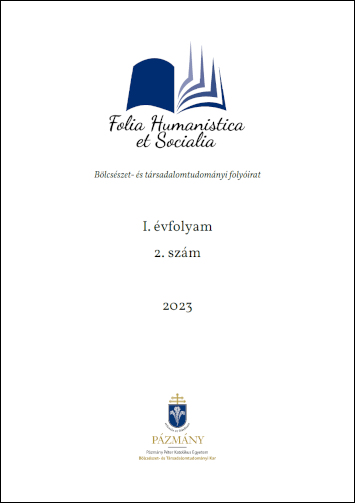Published 31-12-2023 — Updated on 11-06-2024
Copyright (c) 2023 Felber Zsolt Zsombor

This work is licensed under a Creative Commons Attribution 4.0 International License.
Abstract
The objective of this essay was the publication of five newly found stray mace head findings, that I attempted to interpret in the light of the settlement history of their finding locations. Besides the description, classification, dating and photo-documentation of the maces, I also tried to evaulate the findings, for which I believed it was important to examine this type of weapons’ emergence, appearance in the Middle Ages. The finding locations of the maces from the Jászság provide us some important information that the objects do not tell us by themselves, which is why a survey of the finding locations’ settlement history is a significant part of the essay. Although the results obtained do not provide concrete evidence, they shed light on certain historical events and their consequences, such as the Mongol invasion in our case, or they provide assumptions about the history of settlments of the researched territory, like that the settlement of Pechenegs or Cumans in the Jászság cannot be proven. Based on these, and other earlier discussed examples, it was possible to make a hypothesises about the interpretation of the group of findings.
References
- B. Szabó J. (2010). A honfoglalóktól a huszárokig. A középkori magyar könnyűlovasságról. Argumentum Kiadó És Nyomda Kft.
- Boeheim, W. (1890). Handbuch der Waffenkunde. Salzwasser-Verlag Gmbh. https://doi.org/10.11588/diglit.13832
- Boldog Z. (2006). A Déri-gyűjtemény buzogányai (Maces in the Déri Collection). A Debreceni Déri Múzeum Évkönyve 2006, 75–82.
- D’Amato, R. (1942). Σιδηροράβδιον, βαρδούκιον, ματζούκιον, κορύνη: The War Mace Of Byzantium, 9 -15 C. Ad. New evidence from the Balkans in the collection of The World Museum Of Man, Florida. In: Acta Miliaria Mediaevalia 7, 7–48.
- Fodor F. (1942). A Jászság életrajza. Stephaneum Nyomda Budapest.
- Giedl D. (2021). Csillag alakú buzogányok Pest megyéből. In Rácz T. Á. (szerk.), Kincskeresés Kaland Tudomány. 222–235. Press Pannónia Nyomda Kft.
- Kalmár J. (1964). A buzogány (Der Streitkolben). A Nyíregyházi Jósa András Múzeum Évkönyve 4–5, 44–46.
- Kalmár J. (1971). Régi magyar fegyverek. Natura Budapest.
- Katona-Kiss A. (2022). A kései nomád műveltség nyomai a Maros–Körös közén. Adatok a térség kun időszakának történetéhez. Magyarságkutató Intézet.
- Кирпичников, А. Н. (1966). Древнерусское оружие 2. Копья, сулицы, боевые топоры, булавы, кистени IX–ХIII вв. Академия Наук СССР Институт Археологии.
- Kiss-Bíró Gy. (2021). Az Északnyugat-Jászság 11–15. századi településtörténetének vázlata. [PhD disszertáció]. Szegedi Tudományegyetem. https://doi.org/10.14232/phd.11000
- Kolias, T. G. (1988). Byzantinische Waffen. Ein Beitrag zur byzantinische Waffenkunde von der Anfängen bis zur lateinischen Eroberung. Österreichische Akademie der Wissenschaften.
- Kovács L. (1971). A Magyar Nemzeti Múzeum fegyvertárának XI–XIV. századi csillag alakú buzogányai (Les massues étoile es des XIe- XIVe siècles conservées au Musée National Hongrois). Folia Archaeologica 22, 165–181. Népművelési Propaganda Iroda Budapest.
- Kovács S. T. (2010). Huszárfegyverek a 15–17. században. Martin Opitz Kiadó.
- Kovács S. T. (2019). Hárman sem birnátok súlyos buzogányát… Martin Opitz Kiadó.
- Крыганов, A. B. (1987). Кистени салтово-маяцкой культуры Подонья. Советская археология 1987(2), 63–69.
- Langó P. (2001). A jászok korai történetének megítélése a 19–20. században (’Discovery’ of the Jász and their settlement in the Carpathian basin). In Hortiné Bathó E. & Kiss E. (szerk.), A Jász Múzeum Évkönyve 1975–2000. 151–176.
- Pálóczi Horváth A. (2014). Keleti népek a középkori Magyarországon. Besenyők, úzok, kunok és jászok művelődéstörténeti emlékei. In Major B. & Türk A. (szerk.), Studia ad Archaeologiam Pazmaniensiae. A PPKE BTK Régészeti Tanszékének kiadványai 2. Archaeolingua.
- Szendrei J. (1905). A magyar viselet történeti fejlődése. Magyar Tudományos Akadémia.
- Tatár M. (2002). A harci bot kronológiájához. A csornák, a csomasz és a csokmány etimológiája. In: Zimonyi I. (szerk.), Fegyveres nomádok, nomád fegyverek. 164–174. Balassi Kiadó Budapest.
- U. Kőhalmi K. (1972). A steppék nomádja lóháton, fegyverben. Akadémiai Kiadó.

